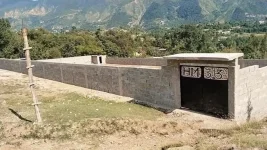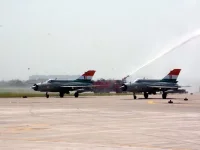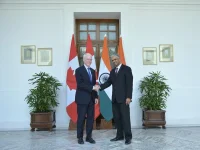Following the exceptional performance of the S-400 Triumf air defence system during a recent military engagement with Pakistan, the Indian Air Force (IAF) is reportedly considering an expansion of its long-range missile capabilities.
This potential procurement includes additional S-400 units and the next-generation S-500 'Prometheus' system from Russia, signalling a major step to bolster India's strategic defences.
The foundation for this consideration was laid in the original $5.43 billion deal signed in 2018 for five S-400 regiments. The contract included a strategic follow-on clause, allowing India to purchase up to five more regiments at the 2018 price, adjusted for inflation.
This provision enables the armed forces to augment their capabilities without entering into prolonged and complex price renegotiations, ensuring cost predictability and a streamlined acquisition process.
The push for more advanced surface-to-air missile (SAM) systems gained significant momentum after the S-400's decisive role in the high-stakes 'Operation Sindoor' earlier this year.
According to senior defence officials, the operation provided undeniable proof of the system's effectiveness and its critical role as a deterrent along India's borders.
"The S-400 performed very well in Operation Sindoor, and has a huge deterrence and punitive capability," a senior source stated, confirming that the system's battlefield success has solidified the case for acquiring more units.
Praising the system as a "game-changer," Air Chief Marshal A.P. Singh detailed its remarkable achievements during the operation. In a recent briefing, he confirmed that the S-400 was responsible for neutralizing five hostile fighter jets.
More notably, it successfully downed a Pakistani Airborne Early Warning and Control (AEW&C) aircraft—a high-value 'eye-in-the-sky' asset—from a distance of approximately 300 kilometres.
This engagement is believed to be the longest-range surface-to-air kill ever recorded, demonstrating the S-400's unparalleled ability to counter critical threats from well beyond visual range.
The S-400 Triumf is a mobile, multi-layered air defence system renowned for its versatility. It can simultaneously track and engage a wide array of aerial threats, including fighter aircraft, unmanned aerial vehicles (UAVs), and both cruise and ballistic missiles, at ranges up to 400 km.
Its advanced radar suite and rapid deployment time have made it a cornerstone of India’s integrated air defence network, significantly strengthening security in the northern and western sectors.
India proceeded with the acquisition from Russia despite the threat of sanctions from the United States under its CAATSA legislation, underscoring New Delhi's commitment to strategic autonomy.
To date, four of the five contracted S-400 regiments have been delivered and operationalised, with the final unit scheduled for delivery by early 2026. The system's proven reliability under real-world combat conditions has validated India's decision.
Looking ahead, the IAF's proposal reportedly involves inducting three additional S-400 squadrons to meet immediate defensive needs. This would be complemented by the acquisition of two squadrons of the more advanced S-500 'Prometheus'.
The S-500 represents a generational leap in air defence technology, designed to intercept hypersonic missiles, stealth aircraft, and even satellites in low-Earth orbit, offering capabilities that are crucial for addressing future threats.
This procurement strategy aligns with India’s long-term goal of self-reliance. From 2030, these Russian systems are expected to be integrated with Project Kusha, an indigenous long-range SAM system being developed by the Defence Research and Development Organisation (DRDO).
Project Kusha, which aims to have a range of 350 km, will incorporate operational lessons from the S-400, blending proven foreign technology with domestic innovation to create a robust, self-sufficient air defence shield.
However, acquiring the S-500 may present challenges. The system is still in limited production, as Russia is prioritising its own military's needs.
Experts suggest a potential deal could involve co-production or technology transfer agreements to mitigate costs and navigate geopolitical risks.
Priced higher than its predecessor, the S-500 promises to extend India's defensive umbrella against the most advanced strategic threats, including intercontinental ballistic missiles (ICBMs).







